Water-water heat pump: device, principle of operation, rules for arranging heating on its basis
For heating and providing hot water to private houses, it is advisable to use a water-water heat pump that works from natural sources - groundwater, rivers, reservoirs, etc. The system is characterized by absolute environmental safety, does not require regular expenditures on consumables, therefore it is becoming more and more popular.
We will talk about the options for a heat pump device that uses the eco-energy of water to transmit it to domestic heating systems. For curious home masters, we described the principles of operation of popular device options and construction technology. Here you will find out what equipment is needed to operate the system.
The content of the article:
The principle of operation of the heat pump water-water
The heat pump embodied the principle of the Carnot cycle. It consists in the fact that a moving substance in a closed system and changes its aggregate state from liquid to gaseous under the influence of chemical, physical or thermal factors releases and absorbs a huge amount of thermal energy.
The role of the working substance is a thermal carrier - water from a well or reservoir.
Even in winter, natural temperatures at a certain depth maintain a positive temperature, so thermal energy can be extracted from them all year round.The only drawback of the installation is the high power consumption and the need to purchase additional equipment.
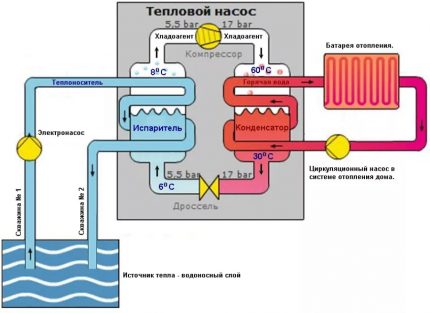
The main elements of a water-to-water heat pump are:
- compressor;
- evaporator;
- capacitor;
- expansion induction valve;
- automatic system for monitoring indicators;
- multiple highways from copper pipes;
- working substance (refrigerant).
Using a special pump, water flows through the pipes from the source to the thermal installation, after which it interacts with gas (freon) boiling at a temperature of + 2-3 degrees. Freon absorbs part of the heat of water and is absorbed by the compressor, where its temperature rises during compression.

Then the refrigerant enters the condenser, after which the hot substance heats the water to a predetermined temperature (from +40 to +80 degrees), which is transported through the pipes of the heating system.
Chilled water enters the evaporator, then discharges into the receiving well. After the passage of the condenser, the refrigerant becomes liquid and collects at the bottom of the element, then through the throttle returns to its original place. Next, the cycle repeats.
What to look at when arranging such heating?
There are a large number of different modifications of heat pumps designed for rooms of any purpose and size, as well as working in different conditions. The equipment is intended for heating houses with a total area of 50 to 150 square meters.
Landmark number 1 - water hardness
The water quality of a well or reservoir plays an important role in the selection of equipment. Not all models are capable of running on hard water containing large amounts of manganese and iron.
A high concentration of these elements harms the system - corrosion forms on the pipes faster, which leads to a decrease in the efficiency of the equipment and its service life.
Therefore, before buying a heat pump take water sample and do its analysis for the presence of these and other trace elements - hydrogen sulfide, ammonia, chlorine, etc. Usually, if the temperature in the pond exceeds +13 degrees, then with a greater degree of probability there are a lot of iron and manganese ions in the water.
Thus, the water-water heat pump is selected taking into account the hardness of the water. There are systems whose elements are most protected from corrosion, but they cost more.
Landmark number 2 - mode of operation
The heat pump can be used as the sole source of heat or interact with other systems. Therefore, before choosing a model, it is important to determine in what mode the device will work.
There are two types of system functioning:
- Monovalent. Devices have great power, suitable for heating the house.
- Bbivalent. Less productive devices complement the main heating equipment.
To build an autonomous system with the main water-water heating unit, a monovalent type is needed.
Reference point 3 - pump power
Power is an important indicator when choosing a heat pump, since system performance depends on it. The higher the power, the higher the efficiency of the equipment, but also the greater the energy consumption.
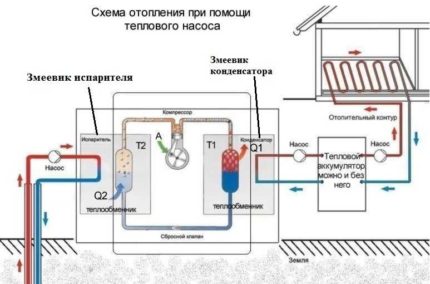
When choosing a device with insufficient power, the efficiency of the system will drop if the heat loss at home exceeds the amount of energy supplied by the system. The heat pump can work around the clock, but there will be no effect from it due to lowering the water temperature.
When the heat loss of the building is lower than the heat transfer of the system, the pump usually starts automatically for several minutes, heats the water to the set temperature, and transports it through the system. Then it turns off until the temperature drops by several degrees. Then the cycle repeats.
Landmark number 4 - the functional of a particular model
Heat pumps may have additional functions, these are:
- Automatic control system that allows you to adjust the microclimate of the room to taste. Management is usually done using a remote control.
- Function of heating water for hot water supply.
- Soundproof housing.
- The ability to connect to other heating systems, solar collectors, which will make the heating equipment completely autonomous.
The duration of operation of heat pumps water-water usually exceeds 30 years.
No less important when choosing equipment consider the cost of installation and installation.
Calculation of the required heat pump capacity
Before buying a system, it is important to first draft and calculate the necessary equipment capacity. Performance is calculated taking into account actual heat demand. The heat consumption, heat loss at home and the presence or absence of a circuit are taken into account DHW.
Calculation Algorithm:
- We calculate the total area of the heated rooms.
- We determine the necessary amount of energy for heating. The optimal indicator per 1 square meter is 0.07 kW.
- To melt a house on N square meters, you need N * 0.07 kW.
- For DHW to the resulting number add an additional 15-20%, that is, N * 0.07 * 0.85 or N * 0.07 * 0.80.
This calculation will be optimal for rooms with ceilings not exceeding a height of 2.7 m. More accurate calculations will be made by specialists during the preparation of the project.
Preparatory work before operation
Preparation for the assembly, connection and commissioning of a heat pump from the water-water series includes a number of standard steps, which we will familiarize with further.
Choosing the optimal water source
It should be noted that not every open source or water well suitable for the smooth operation of the heat pump.Water quality plays an important role, but filters can help solve the problem of pollution.
It is permissible to use a pond or pond located within a radius of 100 meters from the building. If there is no such source, then it becomes necessary to drill wells.

Open source behavior is more predictable than groundwater, so if possible, preference is given to water bodies.
Installation of a thermal system using a well
To install the system using a heat pump, two wells are needed. One of the wells is called debit. It is in it that a special pump is immersed, with the help of which water is taken for subsequent processing in the system. The second well is the receiving well. Chilled water is drained into it.
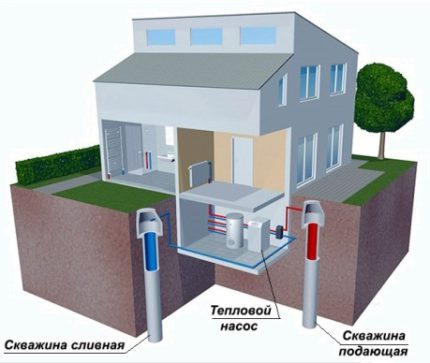
The depth of the debit well should not exceed 50 meters. The deeper the water source is located, the more powerful the pump will be needed to supply it, which will increase the amount of energy consumed.
Debit Well Device
Before operating a debit well, it is important to know how much water it can produce and how much fluid is needed to provide heat to the entire room. The higher the water temperature, the less it will be needed for heating.
It is important to pre-calculate the volume V, which must be pumped out of the well for an hour to heat the room. Suppose there is a pump whose heat output is equal to a certain number Q kW, and power consumption - the number P kW You will also need to find out the temperature of the groundwater (t1) and their temperature after heat exchange (t2).
Then the formula for calculating the amount of water needed per hour looks like this:
V = (Q-P) / (t1-t2).
It is analytically impossible to determine the ability of a debit well to deliver the required amount of water, therefore, it is tested. Within 3 days, the pump uninterruptedly pumps water from the well. Thus, a check is also made of the receiving well for the ability to receive the required amount of water at high load.
It is important to understand that groundwater behaves unpredictably, so water from a debit well may become smaller over time. For example, tides are observed in spring, and in winter, on the contrary, water decreases. If there is not enough water in the well, the system automatically shuts off, heating does not occur.
Features of the receiving well
The receiving tubular well is located downstream of groundwater. It is analytically impossible to determine in which direction water is moving. Therefore, in practice, choose an arbitrary well as a debit well and run into it submersible pump.
If during operation of the system the water level does not drop, then the choice is made correctly. If the level has dropped, and the water temperature has dropped, then you need to swap wells - transfer submersible pump into another hole.
The drain pipe into the receiving well must be immersed several centimeters in water, not reaching the bottom. If you discharge the waste liquid from above, this will lead to waterlogging. The tubular well may stop taking water and clog.
The result threatens overflow, and in winter, possible icing. The best option for a receiving source is a river or pond. If these objects are not nearby, then it becomes necessary to drill one or more receiving wells in order to insure against overflow.

It is impossible to find out whether the well will receive water, either analytically or by test. Practice shows that a drain well can continuously absorb water for many years, and may even fail in one season.
There are technologies that allow using one well as a debit and receiving well, but this method is not effective - operation will be accompanied by difficulties, possibly lowering the water temperature, waterlogging and a number of other problems.
Device system using a pond
The selected pond should be deep enough so that the lower layers of water do not freeze during severe frosts. In the Southern regions, the optimal depth is about 1 meter, in the Northern regions a source with a depth of 3 meters or more is required. Also, the pond must be stable - fluctuations in the water level and its reduction are unacceptable.
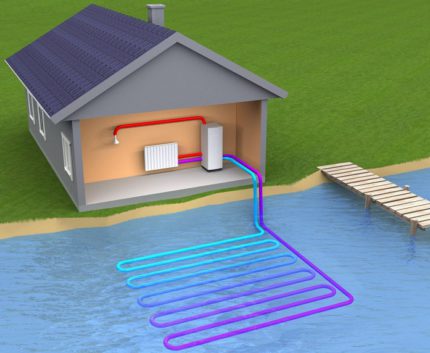
As pipes it is recommended to use models from PNDcharacterized by durability and reliability. It is important to protect the pipes from freezing, by additionally insulating them, and from breakthroughs.
Preparing a home for a heat pump
To interact with the water-water heat pump, a water-based heating system must be equipped in the house, presented in the form of pipes, radiator batteries. For better insulation in the floor and walls, it is also permissible to install heating pipes.
If the equipment will be used to supply hot water, then the house must have a collection system. For the pump to work, you need to connect to an electrical network with unlimited power.
Without additional measures for thermal insulation of the house (insulation outside, installation of double-chamber windows, etc.) operation of the heat pump does not make sense.
Experts recommend additionally installing ventilation system with air heating mechanism. The freon used in the equipment is harmful to humans. If in the system loop occur microfractures, then the gas is released and thereby displaces the air from the room. The refrigerant can cause an exacerbation of lung diseases in a person, asthma attacks.
The heat pump is heavy equipment, its weight can reach tons (depending on power and size), therefore, in order to install it, in some cases it is necessary to build your own foundation, not connected to the foundation of the cottage.
Before installing the equipment, you must take into account the permissible dimensions of the room, maintain the distance to the walls indicated in the product passport.
Optional equipment
The choice additional equipment for the heat pump - a responsible task, the solution of which largely determines the long-term service of the heating system as a whole and the absence of problems in operation.
Submersible pump for wells and ponds
If the heat pump in the system is used to supply hot water, a device with a small capacity can lower the pressure in the taps. A powerful pump will solve this problem, but it consumes more energy. Minimum allowable power during operation FGP - 1 kW.
There are many different modifications. submersible pumps.The choice is made taking into account three criteria, these are:
- Fluid amountused for pumping (the more water you have to transport, the higher the pump power should be).
- Well depth (the deeper the well, the greater the capacity of the equipment should be);
- Well diameter (traditionally prefer 4-inch shafts, as they created the largest number of pumps, unlike 3-inch).
To determine the depth of the well, it is necessary to secure the load on the rope and lower it into the shaft. The wet part of the rope will indicate the full depth of the well, the dry will determine the distance from the beginning of the water to the surface.
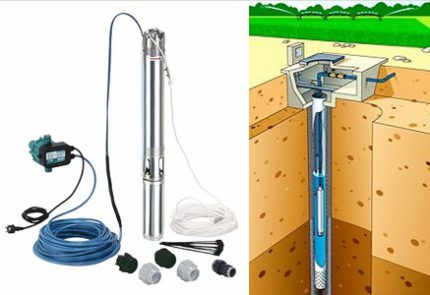
Both universal pumps and equipment specially designed for wells can be suitable for mines. If the mine was developed by professionals, then it is less clogged with sand, so you can safely use a universal pump.
Pumps designed specifically for boreholes are more expensive, but they do a great job with sand and mud, less clogging. Universal are sensitive to a high content of organics, they must be regularly cleaned of dirt, as a result of which their life is reduced.
Pumps with automatic equipment should be preferred, since when the motor overheats, excessive clogging or lack of water in the well, they turn off independently, as a result of which the engine does not overheat and does not fail.
According to the principle of action, 2 types are distinguished submersible pumps:
- Centrifugal.
- Vibrating.
For work in wells that produce water in limestone, centrifugal deep models are preferable. They are sensitive to water with grains of sand and clay suspension.
If the heat pump will be connected to an open reservoir, it is better to use surface pumping equipment designed for pumping dirty water, or an inexpensive vibrating device.
Heat pump intermediate heat exchanger
In heat pumps, during the circulation, Freon may not cool sufficiently, which leads to overheating of the compressor as a result of excessive discharge temperature. Therefore, it is important to improve the cooling of the substance, thereby lowering the pressure in the circuits.
There is another problem common to all heat pumps - the refrigerant can mix with water vapor. If liquid enters the compressor, it may happen. water hammer. In this case, you need to repair or replace the part. Also, water can get into the oil, and it is difficult to extract it from there.
All of the above problems are solved by installing an intermediate heat exchanger. Heat exchangers come in three types - open type, shell-and-tube and coil.
Modification of the open type neutralizes the liquid trapped in the freon during circulation, which minimizes the likelihood water hammer compressor. The device is characterized by high performance with minimal power consumption.

Properly selected pipes will neutralize the possibility of boiling liquid. At the same time, the valve must have sufficient capacity so that the liquid at a low pressure difference can penetrate the device.
The shell-and-tube heat exchanger is presented in the form of a closed design. Heat exchange occurs through the walls of the pipes, and the liquid and refrigerant in it do not mix, unlike open, which provides high pressure for the circulation of steam and air.
The coil heat exchanger is characterized by the presence of a flow controller that controls the flow of liquid freon. The size of the device depends on the power of the heat pump.It is necessary to choose a product, taking into account the functionality and available amount. It is advisable to give preference to collapsible models.
Heat pump filters
Water from wells or ponds does not come in pure form. It may contain sand, dirt, various trace elements - iron, hydrogen sulfide, manganese, chlorine, ammonia, etc. Before entering the heat pump, the water must be filtered.
First of all, it is necessary to eliminate large substances - stones, sand, dirt, silt. To remove them from the water, installation is required hydrocyclone.
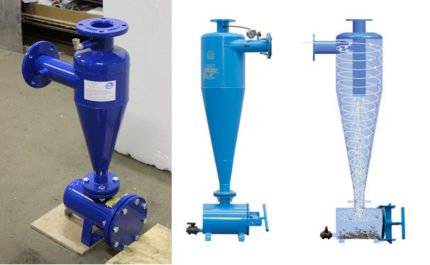
Next, it is important to install filters that eliminate iron, hydrogen sulfide, manganese, ammonia. These trace elements shorten the life of the equipment and corrode it.
You can use filters reverse osmosis, softeners, iron removers and their modifications. To ensure drinking hot water, carbon filters and a UV sterilizer that destroys bacteria and viruses should also be equipped.
Power generator for backup power
Heat pumps operate from the mains, so if a power outage occurs, the house will remain without heating. It is advisable to additionally purchase an electric generator operating on combustible substances.
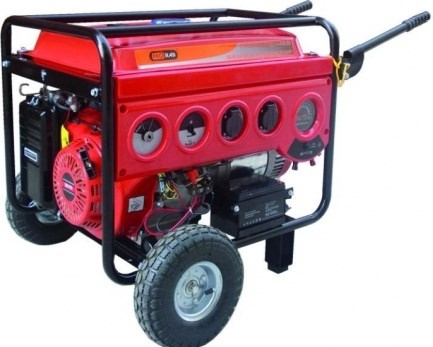
Features of the operation of such a heat pump
Once a year, it is necessary to conduct an independent visual inspection of the pump components, follow the recommendations for maintenance - timely lubricate the parts, monitor the correct operation of the device when pumping water.
Some types of equipment require regular inspection (usually 1-2 times a year) by service center specialists. During the inspection, identify:
- engine oil leakage through cracks in the circuit;
- quality of fixtures and fittings;
- pressure level in tanks and circuits;
- malfunctions in the power wiring.
The installation of a water-to-water heat pump should be entrusted to trained specialists. System inefficiency is most often associated with improper installation. Thermal equipment is suitable for operation by both residents of the Southern regions and the Northern.
Conclusions and useful video on the topic
The video introduces the principle of operation and features of the device:
As a result, we can conclude that the water-to-water heat pump is considered to be an efficient environmentally friendly equipment designed to heat homes up to 150 square meters. For the arrangement of premises of a larger area, quite complicated engineering surveys may already be needed.
If you have any questions while familiarizing yourself with the information provided, please ask them in the box below. We look forward to your comments, questions on the topic, stories and photos about the construction of a mini-hydroelectric station. We are interested in your opinion.

 Frenett heat pump: device and principle of operation + can you assemble it yourself?
Frenett heat pump: device and principle of operation + can you assemble it yourself? 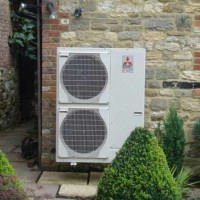 How to make a heat pump for heating a house with your own hands: the principle of operation and assembly scheme
How to make a heat pump for heating a house with your own hands: the principle of operation and assembly scheme  DIY geothermal heat pump for home heating: device, design, self-assembly
DIY geothermal heat pump for home heating: device, design, self-assembly 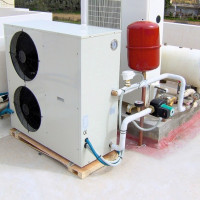 How to make an air-water heat pump: device diagrams and self-assembly
How to make an air-water heat pump: device diagrams and self-assembly  Air-to-air heat pump: principle of operation, device, selection and calculations
Air-to-air heat pump: principle of operation, device, selection and calculations 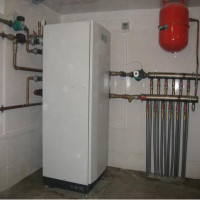 How to make a heat pump with your own hands from an old refrigerator: drawings, instructions and assembly tips
How to make a heat pump with your own hands from an old refrigerator: drawings, instructions and assembly tips  How much does it cost to connect gas to a private house: the price of organizing gas supply
How much does it cost to connect gas to a private house: the price of organizing gas supply  The best washing machines with dryer: model rating and customer tips
The best washing machines with dryer: model rating and customer tips  What is the color temperature of light and the nuances of choosing the temperature of the lamps to suit your needs
What is the color temperature of light and the nuances of choosing the temperature of the lamps to suit your needs  Replacement of a geyser in an apartment: replacement paperwork + basic norms and requirements
Replacement of a geyser in an apartment: replacement paperwork + basic norms and requirements
Any heating system that requires electricity has one significant flaw. And the water-to-water heat pump is no exception.In case of power outages, the system will “unfreeze”, that is, the water will turn into ice and break the pipes. An electric generator will help only if there is someone to start it. Is there always someone in your house who knows how to use a generator?
Nikolai, you somehow too critically described the situation. There should always be an uninterruptible power supply unit that will regulate the flow of energy, as well as power the system in cases of short shutdowns. So do not immediately scare people after one thoughtless thought. That and even if you use an electric generator, I am sure that now there are many solutions for quick and easy startup.
Your calculation (per 1 square meter - 0.07 kW) frightened away the dream of a heat pump. It is much cheaper to buy an electric boiler and get heat at a cost (per 1 square meter - 0.1 kW), which we already have. To pursue a saving of 0.03 kW is more expensive and a decrease in reliability (a bunch of additional equipment and automation).
Vladimir, in the calculation I meant thermal power in the amount of 0.07 kW / m2, and not electric. Thermal power must be divided by a COP coefficient of 2-5, depending on a number of factors.
And what is the minimum water temperature should be? The heat pump does not really warm, I can not understand. Can anyone advise?